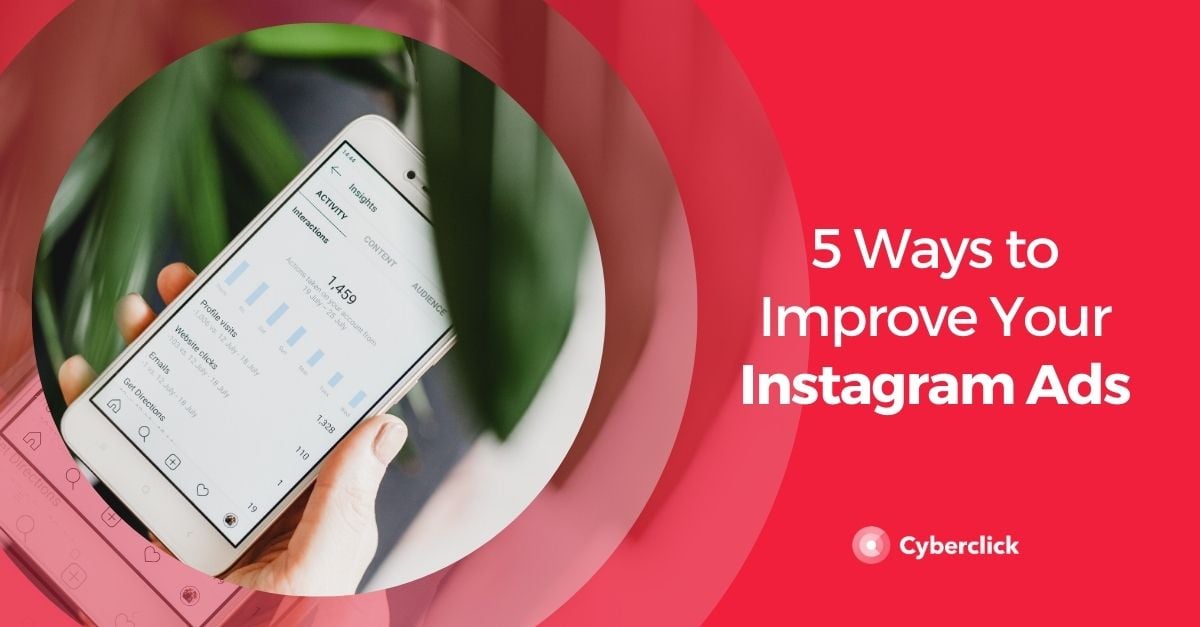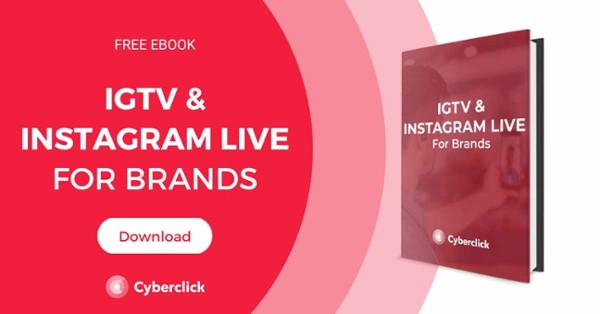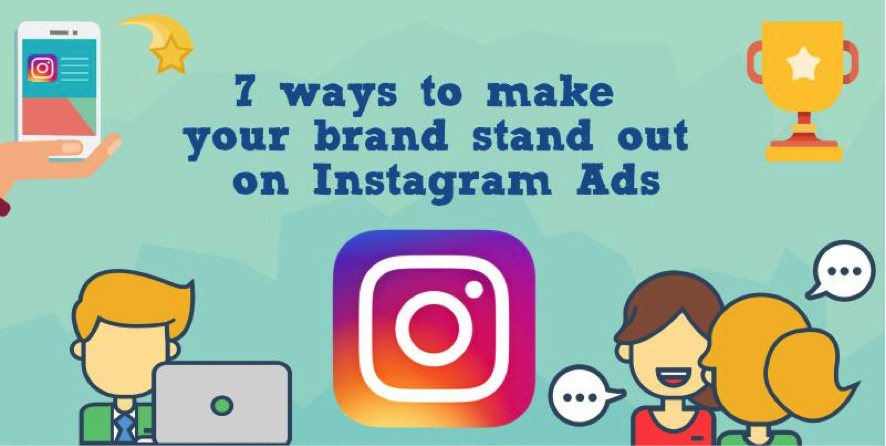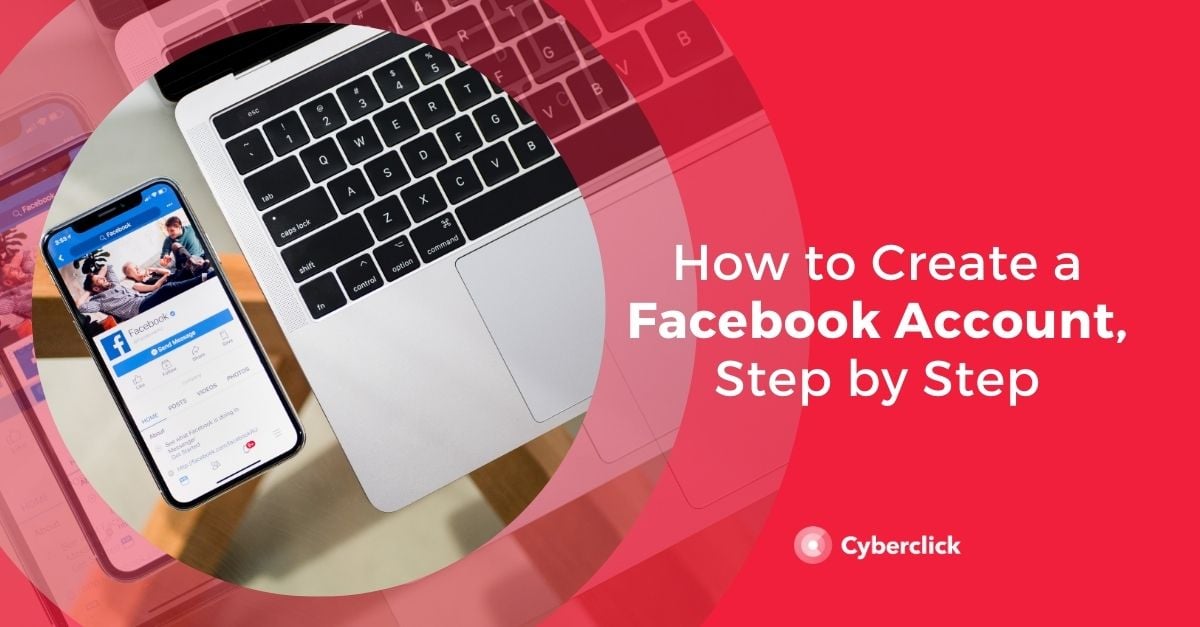Advertising on Instagram is one of the best advertising options in digital marketing. Since it shares the same advertising interface as Facebook, it offers a lot of tools and interesting opportunities for marketers; whatever your business and your target, you are sure to find the ingredients to create the campaign of your dreams.
If you’ve spent anytime advertising on Instagram, you know there are a lot of options to tweak and improve your campaign. But how? With so many possibilities, it’s not always easy to know the best way to optimize your campaigns.
In this article, we’ll offer 5 strategies you can use to improve your Instagram advertising.

Why Are You Interested In Advertising on Instagram?
Instagram is one of the most powerful social networks on the market, and unlike some other trendier platforms, Instagram is fully established among the public in our country. At Cyberclick we believe that advertising on Instagram is a safe bet, and these facts prove us right:
- Globally, this network has no less than 250 million active users per day
- Advertising on Instagram is particularly interesting for brands that target a young audience, as 42.8% of the users of this network are between 19 and 24 years old and 33.9% between 25 and 34
- Instagram is a reference network for finding new content from personal contacts as well as from celebrities and brands. In fact, it is a very popular network among influencers, and the promoted content is particularly popular compared to other networks
- Instagram's advertising platform is very versatile, which allows us to adapt campaigns to our objectives, our audience and the characteristics of our brand.
5 Strategies To Optimize Instagram Advertising
1) Identify Which Phase Of The Conversion Funnel You’re In
The conversion funnel is a key concept in understanding the customer's journey and optimizing your brand’s marketing. It is a graphical representation of the entire customer acquisition process; it is funnel-shaped because not all contacts that express interest end up generating a conversion, so the volume narrows as we go along.
In general, we usually distinguish the following phases or stages of the conversion funnel:
- Awareness (phase prior to funnel entry): the user realizes that he has a need.
- TOFU (top of the funnel): the user starts looking for information to answer that need. This phase is characterized by very general searches, such as "how to get in shape" or "more effective exercises for X". Here our role is to raise awareness about the brand and the need.
- MOFU (middle of the funnel): the user is evaluating different options, for example, gyms to join. Therefore, we must teach them how to choose a solution.
- BOFU (bottom of the funnel): the user has considered the options available and is still interested in our brand. It is time to put all the meat on the spit to make him decide to buy.
- Conversion: the closing of the funnel, when the user becomes a customer.
As you probably know, each of these phases can benefit from a different type of advertising, and advertising on Instagram is no exception. For example, if a user is in the early stages of consideration, a purchase focused ad will not be effective. But if you are ready to buy, you should seize the opportunity and not just offer generic content.
2) Adapt The Type Of Ad To Your Objective
If you're clear about which phase of the conversion funnel you're targeting and what you want to achieve, the next step is to "translate" your strategy into advertising on Instagram. Because each phase of the funnel has a specific type of ad. Fortunately, Instagram Ads have options to meet every possible need.
In the TOFU phase, we want users to start recognizing the brand, but we don't have a specific conversion goal. The types of ads most suited to this phase are publication interaction and video displays.
In the MOFU phase, we are looking for the user to start interacting with our website and, if possible, to register on it. Again, Instagram advertising offers several types of ads that can be tailored to these goals: web registration ads, lead generation ads, and ads that drive traffic to a website.
Finally, in the BOFU phase, we look for the user to perform a specific action linked to the conversion. To achieve this, we can launch ads for interaction with an application, conversions on a website (linked to purchase) or installations of an application. For example, remarketing ads can be a great way to target BOFU users who have added items to their cart, but not made a purchase.
3) Find Your Ideal Audience
In addition to choosing the right type of ad for our target, we must also carefully consider the issue of segmentation. Instagram offers many options for creating ad audiences, but it is important to know exactly what each one entails and use them appropriately.
Again, the type of targeting you choose will depend on the objectives of your campaign and the phase of the funnel you are in.
In the initial acquisition phase, what we are looking for is to reach a wide number of users, so the segmentation will be based on general parameters such as
- Broad demographic data such as age, gender, location or language.
- More specific data, such as educational level, important life events, household composition, etc.
- Behaviors: here we can find things like shopping habits, use of devices or certain activities, for example, regular video game player.
- Partner categories: types of consumers hired from third parties through Instagram, for example, car model.
- Interests: broad (e.g. "cooking") or specific (based on user activity on Instagram)
In the middle of the funnel, a widely used strategy is "prospecting", which is based on locating audiences similar to those we already have. For this, we can use these two tools:
- Personalized audiences: these are audiences based on data provided by us, for example, a database of customers or visitors to our website.
- Similar audiences: the next step is to create an audience that resembles a previous one, in order to locate other users potentially interested in the brand. We can adjust the desired percentage of similarity to broaden or narrow the audience.
And finally, at the end of the funnel, we can play with remarketing to re-impact an audience that is already prepared to convert.
4) Choose The Location Of The Ads Carefully
When advertising on Instagram, there is another key factor besides the type of ad: location. Here, we can also choose where our ads are displayed to customize them as much as possible. There are two great options:
- Displaying ads in the News Feed. In turn, here we can choose between different creativities: static images, videos, carousels…
- Show the ads in the Stories. In this way, we take advantage of the notoriety of this format, which as we have seen stands out especially among Spanish users. Here we recommend opting for the video format, as it is the one that gives the best results.
5) Always Measure The Results
Along with all these customization and targeting options, Instagram also offers a lot of data on ad and campaign performance - take advantage of it!
No strategy is complete without a measurement and reporting plan. So if you want to succeed with your Instagram advertising, set up regular checks and don't stop testing to see what works. The results will be worth it.
Social Account Manager at Cyberclick. Le apasiona el marketing, las redes sociales, leer y escribir.
Social Account Manager at Cyberclick. Passionate about marketing, social media, reading and writing.




.jpg)

Leave your comment and join the conversation